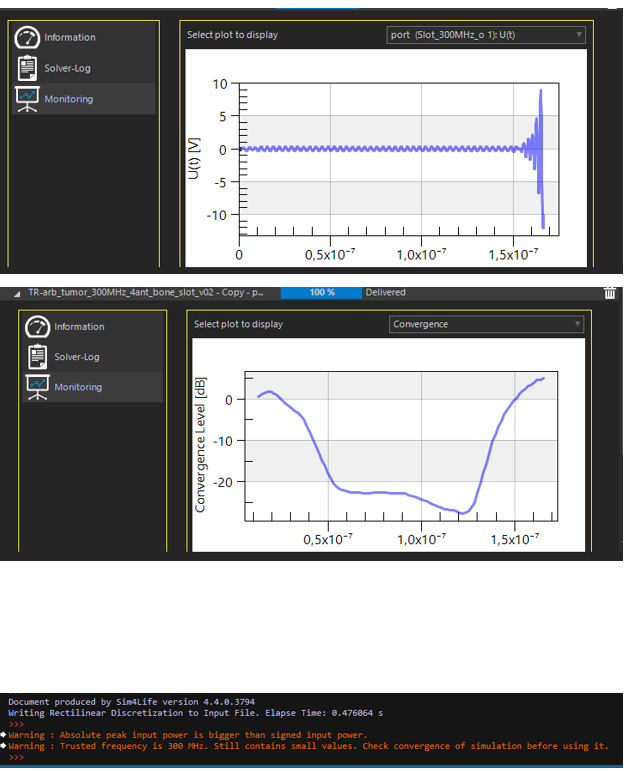EM simulation - Diverging simulation
-
Hi,
I am running multiport EM simulation on anatomical models. In some cases i observe diverging simulations:- I observe that the E field is very large in few voxels which coincide with the part of the skin where the geometry is more complex.
- Sometimes it may happen to be close to the bounding box, but not always.
- I am using the default grid which comes with the imported model, updated for the frequency of simulation
- In some cases I overcome this problem by changing the simulation boundary or extending a water bolus more (which is specific to my application)
Do you think that the cause for this might be something else other than insufficiently refined grid ?
thank you,
redi

-
When you say "diverging simulations", do you actually get an error message? or is it just that the field values are getting very high?
-
-
You need to be a bit more quantitative if you need more help: frequency, specific error message, grid size, cell size, boundary type, convergence plot, etc... You can attach the solver log file: it usually contains a lot of useful information.
-
Alright, in this example the simulation did not diverge, but it looks like it maybe would have if you had let it run for longer. This can happen when the absorbing boundary conditions are still reflecting some energy. As you noticed, increasing the simulated volume helps in this case (assuming the strength of the PML was already set to High).
Another option is to use Gaussian excitation, instead of Harmonic. This almost never diverges, at the expense of a larger grid size (you need smaller grid cells, to accommodate for the higher frequencies). -
Alright, in this example the simulation did not diverge, but it looks like it maybe would have if you had let it run for longer. This can happen when the absorbing boundary conditions are still reflecting some energy. As you noticed, increasing the simulated volume helps in this case (assuming the strength of the PML was already set to High).
Another option is to use Gaussian excitation, instead of Harmonic. This almost never diverges, at the expense of a larger grid size (you need smaller grid cells, to accommodate for the higher frequencies).
